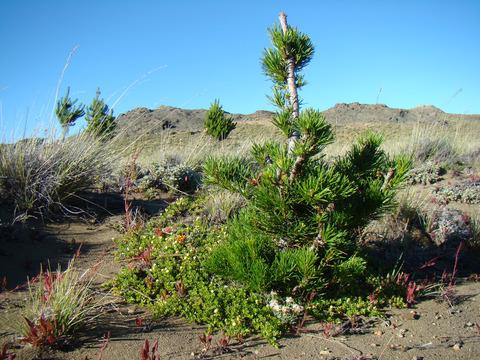Our official English website, www.x-mol.net, welcomes your feedback! (Note: you will need to create a separate account there.)
Facilitation and the invasibility of plant communities
Journal of Ecology ( IF 5.5 ) Pub Date : 2021-02-13 , DOI: 10.1111/1365-2745.13627 Lohengrin A. Cavieres 1, 2
中文翻译:

促进和植物群落的入侵
更新日期:2021-02-13
Journal of Ecology ( IF 5.5 ) Pub Date : 2021-02-13 , DOI: 10.1111/1365-2745.13627 Lohengrin A. Cavieres 1, 2
Affiliation

|
- One of the most studied emergent functions of plant community diversity is the resistance of diverse communities to non‐native invasions. As emphasized in this Special Feature, facilitation among native species is a key mechanism by which biodiversity increases various functions, including resistance to invasion. However, when diverse assemblages facilitate non‐native species, diversity–invasibility resistance may be compromised.
- Here, I review the scientific literature on plant invasion in which facilitative interactions, either among native and non‐native plant species or among non‐native species, affect community invasibility.
- Native species can directly facilitate non‐native species, and also generate net indirect facilitative effects through suppressing species that compete with non‐native invaders, but examples of the latter are not common. Such direct and indirect facilitation among non‐native species contributes to ‘invasional meltdown’ that restructures native communities.
- In general, facilitative interactions between native and non‐native species increased with environmental stress, suggesting that community diversity might resist invasion more effectively in environmentally favourable sites, whereas in environmentally severe sites, facilitative interactions may contribute to invasibility.
- Synthesis. Native and non‐native species can facilitate each other in direct and indirect ways, with important consequences for the invasibility of communities. Facilitative interactions may alter the fundamental relationship between diversity and invasibility, particularly in environmentally severe habitats.
中文翻译:

促进和植物群落的入侵
- 研究最多的植物群落多样性新兴功能之一是多样性群落对非本地入侵的抵抗力。正如本专题所强调的那样,促进本地物种是生物多样性增加各种功能(包括对入侵的抵抗力)的关键机制。但是,当多样化的组合促进非本地物种时,多样性-抗入侵性可能会受到影响。
- 在这里,我回顾了有关植物入侵的科学文献,在这些文献中,本地和非本地植物物种之间或非本地物种之间的促进相互作用影响了社区的入侵。
- 本地物种可以直接促进非本地物种的发展,也可以通过抑制与非本地入侵者竞争的物种来产生间接的间接促进作用,但后者的例子并不常见。非本地物种之间的这种直接和间接促进促进了“入侵崩溃”,从而重新构造了土著社区。
- 通常,本地和非本地物种之间的促进相互作用随着环境压力的增加而增加,这表明社区多样性可能在环境有利的地点更有效地抵御入侵,而在环境严重的地点,促进的相互作用可能有助于入侵。
- 综合。本地和非本地物种可以直接和间接的方式相互促进,这对社区的入侵具有重要的影响。促进性互动可能会改变多样性与可入侵性之间的基本关系,特别是在环境严重的栖息地中。


























 京公网安备 11010802027423号
京公网安备 11010802027423号